Materials Used For Irrigation Fittings
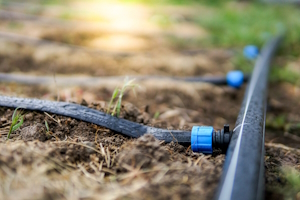
Figure 1: Threaded fittings for a drip irrigation system
The efficiency and durability of any irrigation system largely depend on the type of materials used in its construction. In particular, irrigation fittings are vital in ensuring optimal functioning. This article will delve into the different materials commonly used for irrigation fittings.
- Plastic fittings: Plastic fittings are chosen for being corrosion resistant and lightweight.
- Metal fittings: Metal fittings (e.g., stainless steel and brass) are chosen for applications that require durability against high pressure and temperatures.
- Seals: Irrigation fitting seals are chosen for their chemical, pressure, and temperature resistances.
Plastic fittings
This section looks at the following plastic irrigation fittings:
- Polyvinyl chloride (PVC)
- Polypropylene (PP)
- Polyethylene (PE)
Table 1: Plastic materials for irrigation fittings
| Plastic type | Advantages | Disadvantages |
| PVC |
|
|
| PP |
|
|
| PE |
|
|
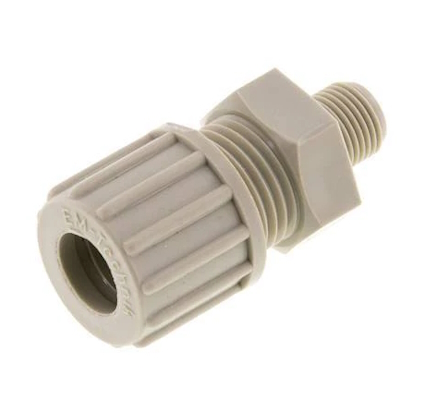
Figure 2: A polypropylene (PP) compression fitting
Plastic fitting selection criteria
Consider the following when selecting between PVC, PP, and PE fittings for an irrigation system:
- Durability: All three plastics are durable, but PE is the most durable and ideal for long-term applications that must withstand varying weather conditions.
- Temperature and pressure: PVC irrigation fittings can handle higher pressures and are often used in applications where high water pressure is expected. However, PVC is less resistant to high temperatures than PP.
- Chemical resistance: PP is resistant to most acids, alkalis, and organic solvents. PVC also has good chemical resistance.
- Cost: PVC fittings for irrigation are usually the most cost-effective choice, followed by PE and then PP.
Metal fittings
Metal fittings are often chosen for their sturdiness and durability in irrigation systems. They are generally more robust than plastic fittings and can handle various environmental conditions and water pressures.
This section looks at fittings made of the following metal materials:
- Brass
- Stainless steel
- Aluminum
Table 2: Metal materials used to make irrigation fittings
| Metal type | Advantages | Disadvantages |
| Brass |
|
|
| Stainless steel |
|
|
| Aluminum |
|
|
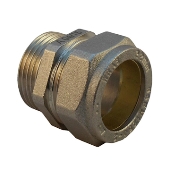
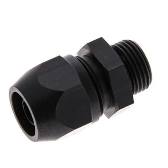
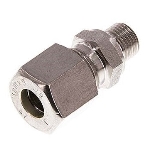
Figure 3: From left to right, brass compression fitting, aluminum compression fitting, and stainless steel compression fitting.
Metal fitting selection criteria
Consider the following when selecting between stainless steel, brass, and aluminum fittings for an irrigation system:
- Durability: Stainless steel is the most resistant, followed closely by brass. Aluminum is corrosion resistant but can be easily scratched, dented, and broken.
- Temperature and pressure: Stainless steel and brass both have excellent resistance to extreme temperatures and high pressures; they can maintain their integrity under harsh conditions. Aluminum irrigation fittings are sensitive to temperature changes.
- Chemical resistance: Stainless steel is resistant to a wide range of chemicals. Aluminum has good chemical resistance but can be susceptible to specific acidic or alkaline chemicals. Brass irrigation fittings can be vulnerable to dezincification, greatly reducing structural integrity.
- Cost: Aluminum irrigation pipe fittings are more economical upfront but their low durability may lead to additional long-term costs. Brass fittings are more expensive but significantly more durable than aluminum irrigation fittings. Stainless steel fittings have the highest upfront but are cost-effective in harsh conditions.
Seals in irrigation fittings
Some fittings in irrigation systems have seals to protect against leakage. Seals come in a variety of materials; it's important to understand which materials are suitable for a specific irrigation application. This section covers the following seal materials:
- NBR (Nitrile butadiene rubber)
- EPDM (Ethylene propylene diene monomer)
- PTFE (Teflon)
- FKM (Viton)
Table 3: Seal materials found in irrigation fittings
| Seal material | Advantages | Disadvantages |
| NBR |
|
|
| EPDM |
|
|
| PTFE |
|
|
| FKM |
|
|
Seal selection criteria
Consider the following when selecting between NBR, EPDM, PTFE, and FKM seals used in fittings for an irrigation system:
- Durability: FKM seals are the most durable. NBR and EPDM seals follow. PTFE seals have excellent chemical resistance but are less durable than the other seal types.
-
Temperature and pressure: A fitting seal's temperature and pressure resistance are important because they are typically lower than the body material's resistances. Therefore, the fitting's operating temperature and pressure values are controlled by the seal's values.
- NBR: Temperature range (-30 °C to 100 °C or -22 °F to 212 °F). Typically can handle pressures up to 34 bar (500 psi).
- EPDM: Temperature range (-50 °C to 150 °C or -58 °F to 302 °F). Typically can handle pressures up to 24 bar (350 psi).
- PTFE: Temperature range (-200 °C to 260 °C or -328 °F to 500 °F). Typically can handle pressures over 69 bar (1000 psi).
- FKM: Temperature range (-20 °C to 200 °C or -4 °F to 392 °F). Typically can handle pressures over 69 bar (1000 psi).
- Chemical resistance: PTFE seals have superior resistance to a wide range of corrosive liquids, gasses, and acids. FKM seals also have great chemical resistance, especially towards oils. NBR and EPDM seals have good chemical resistance but do not have good resistance to certain solvents and hydrocarbons.
- Cost: FKM and PTFE seals cost more upfront but have exceptional performance and longevity. NBR and EPDM cost less upfront but may need to be replaced more often.
FAQs
What are irrigation fittings made of?
Irrigation fittings come in a wide range of materials to suit the application's demands. They can be made of plastics (e.g., PVC) and metals (e.g., brass, stainless steel, and aluminum).
What is the best material for irrigation fittings?
The best material for irrigation fittings depends on the application. For example, plastics work well in corrosive environments outside of the sun.




